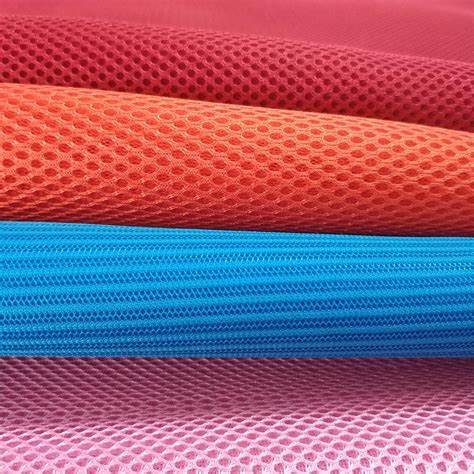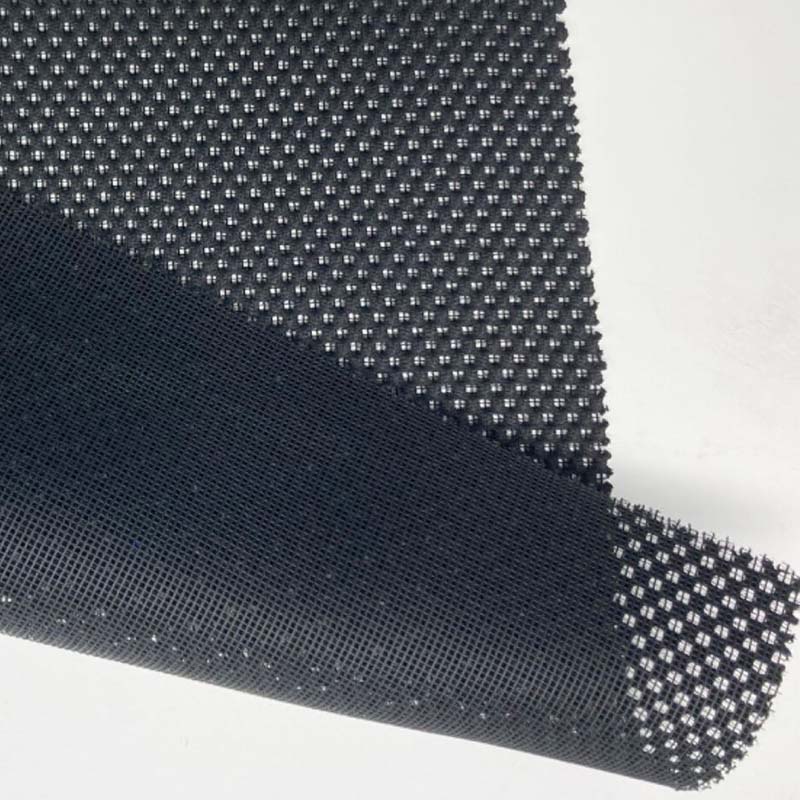The Importance Of Sustainability In Functional Textiles
As the textile industry continues to evolve, sustainability has become a critical aspect of product development and manufacturing. With consumers increasingly demanding environmentally-friendly products, functional textiles must balance their performance requirements with sustainable practices. By utilizing renewable and recycled materials, energy-efficient manufacturing processes, and precision engineering techniques, functional textile companies can reduce their environmental footprint while still delivering high-performance products.
One of the key strategies for sustainable functional textiles is the use of organic cotton and plant-derived fibers. These materials require less water and chemicals to grow, reducing the environmental impact of the production process. Additionally, incorporating recycled plastics and metals recovered from obsolete electronics can help reduce waste and minimize the use of virgin materials.
Another important aspect of sustainable functional textiles is energy efficiency. By leveraging precision engineering techniques, manufacturers can minimize waste and reduce the energy required to produce high-performance textiles. This not only benefits the environment but also helps businesses cut costs and future-proof their operations against resource constraints.
A sustainable approach to functional textiles benefits not only customers who are concerned with ethically-sourced apparel but also business owners who are looking to reduce their environmental impact. By balancing function with sustainability, functional textile companies can ensure the long-term viability of their products and operations.
In conclusion, sustainability is a critical aspect of the textile industry, and functional textiles are no exception. By utilizing renewable and recycled materials, energy-efficient manufacturing processes, and precision engineering techniques, functional textile companies can reduce their environmental footprint while still delivering high-performance products. A sustainable approach to functional textiles benefits both customers and businesses, ensuring the long-term viability of this innovative textile sector.
The Evolution Of Functional Textiles
Functional textiles have come a long way since their early days of incorporating performance innovations like breathable fabrics for outdoor activities. Today, advances in material science and nanotechnology have enabled the development of highly specialized textiles with enhanced or novel properties. These cutting-edge textiles are not only functional but also revolutionizing various industries.
One of the most significant advancements in functional textiles is the use of phase-changing materials. These fabrics can regulate temperature, providing optimal comfort and energy efficiency. Memory metals, which can change shape for improved fit and comfort, are also being incorporated into textiles. Additionally, electronic components like sensors and batteries can be embedded directly into fibers, enabling the creation of smart textiles that can monitor vital signs, track fitness, and even charge electronic devices.
Biotechnologies are also playing a crucial role in the development of functional textiles. Biomimetic capabilities, inspired by nature, are being integrated into textiles. For instance, self-cleaning properties inspired by lotus leaves and thermoregulation found in penguin feathers are being used to create textiles that can clean themselves and regulate body temperature.
The convergence of different scientific disciplines is leading to the development of multifunctional textiles with applications across various industries. Healthcare, transportation, architecture, and many other sectors are already benefiting from functional textiles. For instance, medical textiles are being used to create wound dressings that can promote healing and prevent infection. In transportation, functional textiles are being used to create lightweight and durable materials for aircraft and automotive interiors. In architecture, textiles are being used to create building facades that can regulate temperature and reduce energy consumption.
As functional textiles continue to evolve, their potential to transform our lives is vast. With further refinement, these textiles could radically change how we experience and interact with the world around us. Imagine a world where your clothes can adjust to your body temperature, monitor your health, and even charge your phone! It’s an exciting time for functional textiles, and the possibilities are endless.
The Impact Of Functional Textiles On Health And Wellness
Functional textiles have revolutionized various aspects of our lives, offering numerous benefits for personal health and wellness. In the realm of sportswear, breathable and temperature-regulating fabrics have enabled athletes to perform at their best, while avoiding overheating and discomfort. For medical applications, advanced textiles have facilitated non-invasive health monitoring through integrated sensors, and have even allowed garments to double as medical devices, such as compression stockings.
The development of antimicrobial fabrics has been a significant breakthrough in the fight against hospital-acquired infections, reducing the risk of transmission and promoting a safer healthcare environment. In the realm of assistive clothing and prosthetics, novel materials have provided enhanced mobility, comfort, and aesthetic options for individuals with disabilities or medical conditions, improving their overall quality of life.
Furthermore, certain functional fibers are being studied for their potential in drug delivery through the skin, offering a new frontier in the treatment of various medical conditions. As material science innovations continue to advance, textiles are poised to play an even greater role in preventative health, rehabilitation, and quality of life optimization.
The intersection of materials, biomedicine, and apparel design has given rise to an interdisciplinary sector that holds great promise for impacting global wellness in the years to come. By serving both performance enhancement and clinical needs, functional textiles have the potential to revolutionize the way we approach health and wellness, improving lives and empowering individuals to achieve their full potential.
The Future Of Functional Textiles: Innovations And Opportunities
The future of functional textiles looks promising, with significant investments in advanced materials research and development from both the public and private sectors. Biotechnologies are emerging as a sustainable alternative to traditional fibers, with the potential to directly photosynthesize energy or sequester pollutants. Nanotechnology breakthroughs may lead to the creation of “hyperstable” fabrics with unprecedented self-healing and shape-shifting abilities. Additionally, the miniaturization of electronics is paving the way for truly wearable “smart” textiles with embedded displays, AI assistants, and other advanced features.
3D printing and customizable manufacturing technologies are also expected to play a significant role in the future of functional textiles. These technologies could enable on-demand production of perfectly tailored custom designs, providing consumers with a level of personalization and convenience that was previously unimaginable.
Moreover, there are opportunities for localized “fab labs” to economically empower artisans and communities through digital fabrication of technical textiles. This could democratize access to advanced materials and manufacturing technologies, enabling local communities to produce high-quality functional textiles that meet their specific needs and preferences.
As the convergence of sciences and technologies continues to accelerate, the functional textiles of tomorrow are likely to become almost indistinguishable from conventional clothing. With a focus on user experience and science-driven design, these textiles will seamlessly improve our lives, providing us with comfort, convenience, and sustainability in a way that was previously unimaginable.
Case Studies: Success Stories In Functional Textile Industry
Several companies exemplify the commercial potential of innovative functional textiles. Nike developed a moisture-wicking fiber that enhanced athletic performance and dominated the sportswear market. Under Armour’s heat-rejecting fabrics helped athletes push boundaries, gaining the brand international recognition. Adidas partnered with Parley to create shoes from ocean plastic waste, demonstrating sustainability and commercial viability. Hexoskin developed medical-grade smart garments approved by the FDA to unobtrusively monitor patient health during recovery. Uniqlo’s HeatTech line utilizes phase change materials to regulate body temperature with clothing, achieving massive worldwide sales. These case studies illustrate how functional fabrics can drastically improve user experiences while driving business growth when commercialized through thoughtful product development, compelling marketing and environmental/social responsibility.
Conclusion: The Future Of Functional Textiles And Our Responsibility
As functional textiles continue to evolve, it is important to ensure that they are developed and used in a responsible and ethical manner. This includes prioritizing safety, ethics, and environmental protection throughout the innovation, scaling, and selection process. Additionally, it is essential to consider the needs of disadvantaged groups and to implement circular manufacturing practices to minimize waste and maximize the shared benefits of these technically advanced textiles.
To achieve this, researchers, companies, and consumers must work together to promote open access to knowledge and information, and to ensure that the benefits of functional textiles are equitably distributed. This can be achieved through collaborations between industry, academia, and government, as well as through initiatives that support education, training, and capacity-building for disadvantaged communities.
Furthermore, it is important to recognize the potential environmental impacts of functional textiles and to take steps to mitigate these effects. This includes developing sustainable materials and manufacturing processes, reducing waste and emissions, and promoting the use of recycled materials.
By guiding the development and use of functional textiles with principles of integrity, equity, and stewardship, we can ensure that these technically advanced textiles are used to create positive social, environmental, and economic impacts. This will not only benefit society but also contribute to a more sustainable and equitable future for all.
In conclusion, the future of functional textiles is bright, and by working together, we can ensure that these advanced materials are used to create a better world for everyone. It is our responsibility to prioritize safety, ethics, and environmental protection, and to promote equity, accessibility, and sustainability in the development and use of functional textiles. By doing so, we can harness the full potential of these technologies to create a brighter, more sustainable future for all.




